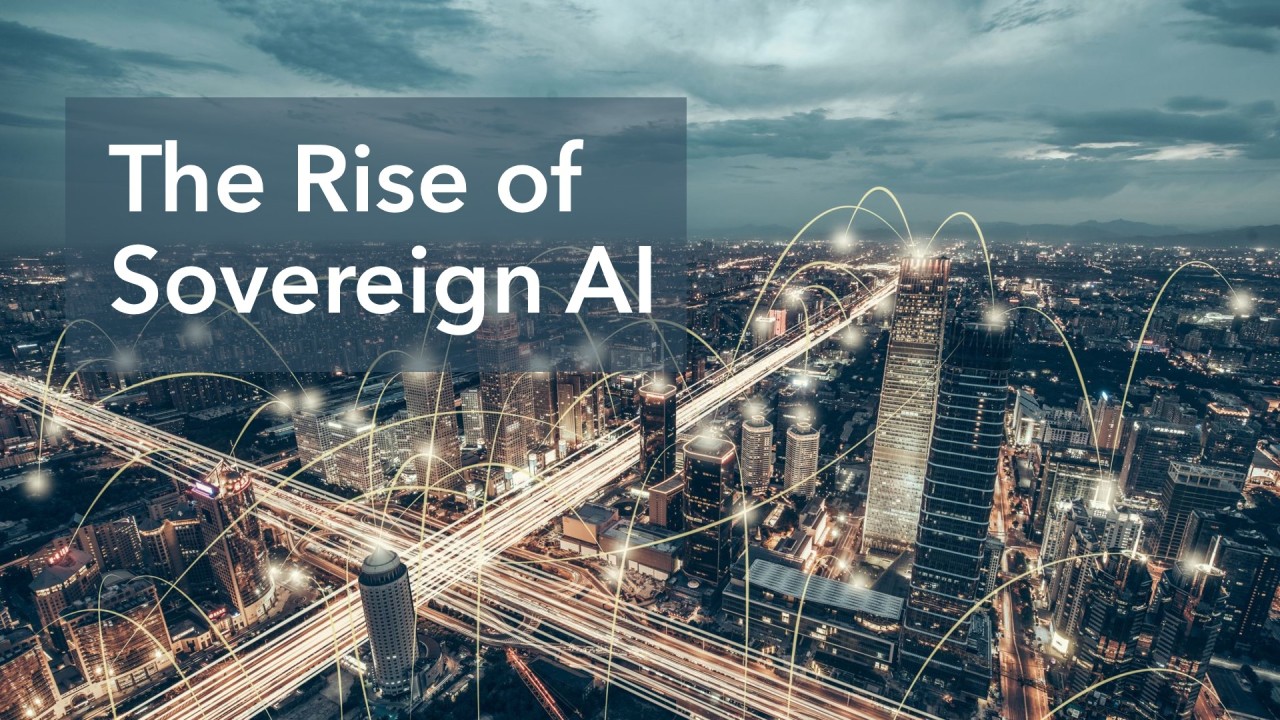Sovereign AI The Future of Autonomous National Technology
In the era of digital transformation, Sovereign AI emerges as a pivotal concept, representing a nation’s ability to develop, control, and deploy artificial intelligence technologies independently. This article delves into the significance of Sovereign AI, its implications for national security, economic growth, and technological innovation, offering a comprehensive overview of its current state and future potential.
Defining Sovereign AI
Sovereign AI represents a nation’s strategic capability to develop, control, and deploy artificial intelligence systems independently, ensuring alignment with its legal, ethical, and security frameworks. Unlike general AI, which is often driven by multinational corporations or open-source communities, Sovereign AI is intrinsically tied to national interests. It emphasizes data sovereignty, ensuring that critical datasets remain within national borders and comply with local regulations. For instance, the EU’s GDPR and China’s Data Security Law reflect efforts to assert control over data, a cornerstone of Sovereign AI.
Another key distinction lies in algorithmic independence, where nations prioritize homegrown AI models over foreign dependencies. Countries like the UAE, with its Falcon AI initiative, and India, with its Bhashini project, are investing in locally developed algorithms to reduce reliance on external tech giants. This autonomy mitigates risks such as algorithmic bias imposed by foreign systems or vulnerabilities in global supply chains.
Infrastructure forms the third pillar, as Sovereign AI demands robust, nationally controlled compute resources. France’s Jean Zay supercomputer and Japan’s Fugaku exemplify investments in domestic high-performance computing to avoid dependence on foreign cloud providers. These initiatives underscore the geopolitical dimension of AI, where technological self-sufficiency translates into strategic advantage.
The rise of Sovereign AI reflects a broader shift in global tech landscapes, where nations recognize AI as a dual-use technology with implications for economic competitiveness and national security. By prioritizing sovereignty, countries aim to harness AI’s potential while safeguarding their digital ecosystems from external influence or disruption.
The Pillars of Sovereign AI
The concept of Sovereign AI rests on three foundational pillars: data sovereignty, algorithmic independence, and infrastructure control. Together, these elements ensure a nation’s ability to develop, deploy, and govern AI systems autonomously, free from external dependencies that could compromise security or strategic interests.
Data sovereignty is the cornerstone, emphasizing a nation’s right to govern and protect its data within its borders. This includes stringent regulations on data storage, processing, and cross-border transfers, ensuring sensitive information remains under national jurisdiction. Countries like China and the EU have implemented strict data localization laws, reinforcing their control over domestic datasets critical for training AI models. Without data sovereignty, nations risk exposing critical insights to foreign entities, undermining their competitive and security advantages.
Algorithmic independence refers to a nation’s capacity to develop and refine AI models without reliance on foreign algorithms or proprietary frameworks. This involves investing in homegrown research, open-source alternatives, and indigenous AI ecosystems. For instance, India’s AI Mission prioritizes developing local AI models to reduce dependence on Western tech giants. Algorithmic sovereignty ensures that AI systems align with national values, legal frameworks, and ethical standards, avoiding biases or restrictions imposed by external platforms.
Lastly, infrastructure control encompasses the physical and digital backbone required for AI development, including high-performance computing, cloud resources, and semiconductor supply chains. Nations like the U.S. and Japan are investing heavily in domestic chip manufacturing to secure their AI infrastructure. Without self-sufficient infrastructure, countries face bottlenecks in AI scalability and resilience, leaving them vulnerable to geopolitical disruptions.
These pillars collectively empower nations to harness AI as a strategic asset, fostering innovation while safeguarding sovereignty in an increasingly digital world.
Global Leaders in Sovereign AI
Global leaders in Sovereign AI are shaping the future of autonomous national technology through distinct strategies and investments. The U.S. and China lead with aggressive funding and policy frameworks, while the EU and smaller nations focus on ethical governance and regional collaboration.
The U.S. prioritizes private-sector innovation, with initiatives like the National AI Initiative Act and partnerships between DARPA and tech giants. Its approach combines military applications with open-market competition, ensuring dominance in AI research and deployment. In contrast, China employs a state-driven model, centralizing control under initiatives like the New Generation AI Development Plan. Massive investments in surveillance, smart cities, and dual-use technologies reflect its ambition to lead by 2030.
The EU balances innovation with regulation, emphasizing data privacy (GDPR) and ethical AI under the AI Act. Its strategy fosters cross-border collaboration, leveraging collective resources to compete with larger players. Meanwhile, nations like South Korea and Israel focus on niche strengths—semiconductors and cybersecurity, respectively—to carve out sovereign niches.
Emerging economies, such as India and Brazil, are building localized AI ecosystems through public-private partnerships and open-source frameworks. India’s National AI Strategy targets agriculture and healthcare, while Brazil’s AI ethics guidelines aim to prevent dependency on foreign tech.
Key contrasts lie in governance: the U.S. and China favor scale and speed, while the EU and others emphasize oversight. Yet all share a common thread—leveraging Sovereign AI to reduce reliance on external systems, aligning with the pillars of data sovereignty and infrastructure independence discussed earlier. This sets the stage for examining how these efforts intersect with national security in the next chapter.
Sovereign AI and National Security
Sovereign AI has emerged as a cornerstone of modern national security, offering unprecedented capabilities in cybersecurity, surveillance, and defense. Unlike traditional systems, autonomous AI technologies enable real-time threat detection and response, reducing reliance on human intervention and minimizing vulnerabilities. Nations leveraging Sovereign AI can deploy advanced algorithms to identify and neutralize cyber threats, such as malware, ransomware, and state-sponsored attacks, before they escalate. For instance, AI-driven anomaly detection systems can analyze vast datasets to spot irregularities in network traffic, providing a proactive shield against breaches.
In the realm of surveillance, Sovereign AI enhances border security and critical infrastructure protection. Autonomous drones equipped with computer vision can monitor remote areas, while facial recognition systems aid in identifying potential threats in crowded spaces. These technologies, however, raise ethical concerns about privacy and misuse, necessitating robust governance frameworks to balance security and civil liberties.
Defense mechanisms powered by AI are revolutionizing military strategies. Autonomous weapons systems, though controversial, offer precision and efficiency in combat scenarios, reducing collateral damage. AI can also simulate battlefield outcomes, enabling strategic planning with higher accuracy. Additionally, AI-driven logistics optimize resource allocation, ensuring military operations run smoothly under demanding conditions.
The integration of Sovereign AI into national security frameworks is not without challenges. Adversarial AI attacks, where malicious actors manipulate algorithms, pose significant risks. Nations must invest in resilient AI systems capable of withstanding such exploits. Collaboration between governments, academia, and the private sector is essential to develop secure, ethical, and effective solutions. As global tensions rise, the race to dominate Sovereign AI in security applications will shape the future of geopolitical stability.
Economic Implications of Sovereign AI
Sovereign AI is reshaping global economies by fostering innovation, enhancing productivity, and creating new industries. Nations investing in autonomous AI technologies gain a competitive edge, as these systems optimize supply chains, automate complex processes, and unlock untapped economic potential. For instance, Germany’s Industrie 4.0 initiative leverages sovereign AI to revolutionize manufacturing, reducing downtime by 30% through predictive maintenance powered by localized AI models. This not only boosts efficiency but also strengthens domestic supply chains against global disruptions.
The financial sector is another area transformed by sovereign AI. Singapore’s MAS (Monetary Authority of Singapore) employs AI-driven regulatory frameworks to detect fraud in real-time, reducing financial crimes by 25%. By retaining control over these systems, Singapore ensures data sovereignty while attracting foreign investments due to its robust, AI-augmented economy. Similarly, South Korea’s AI semiconductor industry has surged, with homegrown AI chips reducing reliance on foreign tech and generating $12 billion in annual revenue.
Sovereign AI also democratizes innovation. India’s AI agriculture platforms, like those developed by the National Farmers’ Federation, use localized data to predict crop yields, helping small farmers increase profits by 20%. This demonstrates how sovereign AI can uplift entire sectors without dependence on external tech giants.
However, the economic benefits come with challenges, as the next chapter will explore—balancing innovation with ethical and technological hurdles. Yet, the undeniable impact of sovereign AI on national competitiveness underscores its role as a cornerstone of future economic resilience. Nations that harness it effectively will dominate the next era of global tech leadership.
Challenges to Achieving Sovereign AI
Developing Sovereign AI presents nations with formidable challenges, ranging from technological limitations to geopolitical tensions. One of the most pressing obstacles is the technological gap between leading AI powers and smaller economies. Many countries lack the infrastructure, talent, and funding required to build competitive AI ecosystems. For instance, training advanced models demands massive computational resources, which are often concentrated in a handful of nations. Without access to cutting-edge hardware or proprietary datasets, smaller players struggle to keep pace.
Another critical challenge is ethical and regulatory uncertainty. As AI systems become more autonomous, questions arise about accountability, bias, and misuse. Nations must navigate complex ethical dilemmas while ensuring their AI frameworks align with global standards—or risk isolation. Competing regulatory approaches, such as the EU’s strict AI Act versus the U.S.’s more flexible guidelines, further complicate harmonization efforts.
International competition exacerbates these hurdles. Geopolitical rivalries can lead to data hoarding, trade restrictions, or even sabotage. For example, export controls on AI chips or sanctions on research collaborations stifle innovation and create dependencies. Additionally, the dominance of multinational tech giants threatens national sovereignty, as their closed ecosystems often overshadow homegrown solutions.
To overcome these barriers, nations can adopt several strategies:
- Public-private partnerships can pool resources and expertise, accelerating R&D while mitigating financial risks.
- Regional alliances enable smaller countries to share infrastructure and regulatory frameworks, fostering collective resilience.
- Open-source initiatives democratize access to foundational models, reducing reliance on proprietary technologies.
Addressing these challenges is essential to ensuring that Sovereign AI remains inclusive, ethical, and competitive in a fragmented global landscape. The next chapter will explore how governance frameworks can strike a balance between innovation and accountability.
Ethical Considerations and Governance
The rise of Sovereign AI brings forth complex ethical dilemmas and governance challenges that nations must navigate to ensure responsible development. At its core, the tension between innovation and privacy looms large. Governments leveraging AI for national security or public services must balance efficiency with the protection of citizen rights. For instance, mass surveillance powered by AI could enhance security but risks eroding personal freedoms. Similarly, algorithmic bias in public-sector AI systems could perpetuate inequality, raising questions about fairness and accountability.
A robust governance framework is essential to address these concerns. National AI strategies must incorporate transparency, auditability, and public oversight to build trust. However, sovereignty in AI also demands international cooperation. Without harmonized standards, divergent regulations could fragment global AI ecosystems, stifling innovation and creating jurisdictional conflicts. Initiatives like the EU’s AI Act and OECD’s AI Principles offer templates, but broader multilateral agreements are needed to ensure ethical consistency.
Key considerations include:
- Data sovereignty: Ensuring citizen data remains under national control while enabling cross-border collaboration.
- Algorithmic accountability: Mandating explainability in AI decision-making to prevent opaque or discriminatory outcomes.
- Human oversight: Preserving human agency in critical domains like defense, healthcare, and justice.
The path forward requires a delicate equilibrium—fostering innovation without compromising ethical guardrails. As nations strive for AI sovereignty, governance must evolve in tandem, ensuring that technological progress aligns with societal values. The next chapter will explore how public-private partnerships can accelerate this balance, bridging gaps in expertise and resources.
The Role of Public-Private Partnerships
Public-private partnerships (PPPs) play a pivotal role in advancing Sovereign AI, bridging the gap between national strategic objectives and private-sector innovation. These collaborations enable governments to leverage cutting-edge AI technologies while ensuring alignment with ethical and governance frameworks discussed earlier. By pooling resources, expertise, and infrastructure, PPPs accelerate the development of homegrown AI ecosystems, reducing reliance on foreign tech giants and fostering self-sufficiency.
One notable example is the partnership between the U.S. Department of Defense and private AI firms like Palantir and Scale AI. These collaborations have enhanced national security through AI-driven data analysis and autonomous systems, while maintaining strict compliance with ethical guidelines. Similarly, the European Union’s GAIA-X initiative unites public institutions with companies like Siemens and Deutsche Telekom to build a sovereign cloud infrastructure, ensuring data sovereignty and interoperability across member states.
In Asia, Singapore’s AI Singapore program exemplifies how PPPs can drive innovation. By involving local startups, universities, and multinational corporations, the initiative has developed AI solutions tailored to regional needs, from healthcare to urban planning. These efforts are complemented by robust governance frameworks, ensuring that innovation does not compromise privacy or security.
The success of these partnerships hinges on clear regulatory frameworks, shared risk-taking, and long-term investment strategies. Governments provide policy direction and funding, while private entities contribute agility and technical expertise. Together, they create a symbiotic relationship that strengthens Sovereign AI capabilities without duplicating efforts. As we look ahead to future trends, these collaborations will be critical in shaping the global AI landscape, ensuring nations remain competitive while upholding ethical standards.
Future Trends in Sovereign AI
The future of Sovereign AI will be shaped by rapid technological advancements and shifting geopolitical dynamics. Emerging technologies like neuromorphic computing, federated learning, and edge AI will enable nations to develop more resilient and decentralized AI systems. These innovations will reduce reliance on centralized cloud infrastructure, allowing countries to maintain greater control over their data and computational resources. Federated learning, in particular, will empower nations to collaborate on AI development without compromising data sovereignty, fostering a new era of cross-border AI alliances while preserving national security interests.
Global AI dominance is likely to shift as emerging economies invest heavily in sovereign AI capabilities. Countries like India, Brazil, and the UAE are positioning themselves as key players, challenging the current duopoly of the US and China. This diversification will lead to a more multipolar AI landscape, where regional AI ecosystems thrive under localized governance models. However, this could also intensify competition, potentially leading to fragmented AI standards and regulatory conflicts.
Quantum computing will be a game-changer for Sovereign AI, offering unprecedented computational power for AI training and optimization. Nations that lead in quantum research will gain a strategic advantage, as quantum-enhanced AI could break current encryption methods, revolutionize drug discovery, and optimize national infrastructure. Countries investing in quantum-AI convergence, such as Canada and Germany, may leapfrog traditional AI powerhouses.
Ethical and regulatory frameworks will evolve alongside these technologies, with nations balancing innovation against risks like AI-driven disinformation and autonomous weapons. The future of Sovereign AI will hinge on how well countries adapt to these trends, ensuring technological autonomy while navigating an increasingly interconnected yet competitive global landscape.
Preparing for a Sovereign AI Future
To prepare for a Sovereign AI future, nations and organizations must adopt a multi-faceted approach that balances innovation with security, ethics, and sustainability. The following actionable insights outline key areas of focus:
Education and Workforce Development:
Building a skilled workforce is critical. Nations should invest in AI-focused curricula at all education levels, emphasizing not only technical skills but also ethical considerations and governance. Partnerships between academia, industry, and government can accelerate knowledge transfer. Reskilling programs should target existing professionals to mitigate job displacement risks.
Policy and Regulatory Frameworks:
Governments must establish agile, forward-looking policies that foster AI innovation while safeguarding national interests. This includes:
- Creating data sovereignty laws to ensure control over domestic data.
- Implementing ethical guidelines for AI deployment in sensitive sectors like defense and healthcare.
- Encouraging public-private collaboration to align AI development with national priorities.
Policies should also address cross-border AI governance to manage geopolitical tensions and ensure interoperability.
Infrastructure and Technological Readiness:
Developing robust AI infrastructure is non-negotiable. Key steps include:
- Investing in high-performance computing (HPC) and cloud capabilities to support large-scale AI models.
- Building secure, decentralized data ecosystems to prevent foreign dependency.
- Prioritizing quantum-resistant encryption to future-proof national AI systems.
Nations should also foster local AI ecosystems by supporting startups and research hubs, ensuring self-reliance in critical technologies.
By addressing these pillars, nations can position themselves as leaders in the Sovereign AI era, balancing autonomy with global collaboration. The next phase will require continuous adaptation as AI landscapes evolve, making agility a cornerstone of long-term strategy.

Conclusions
Sovereign AI stands at the forefront of national strategy in the digital era, offering unparalleled opportunities for security, economic growth, and technological leadership. As nations navigate the complexities of AI sovereignty, collaboration, innovation, and ethical governance will be paramount in shaping a future where technology serves the greater good of humanity.



